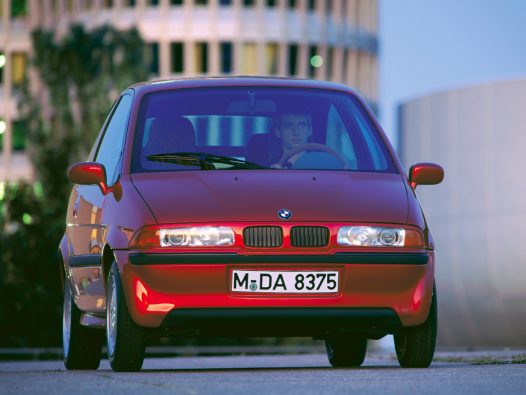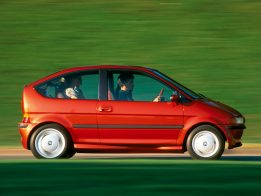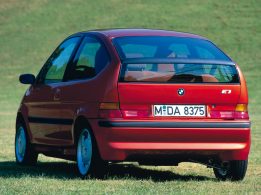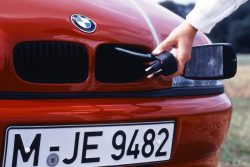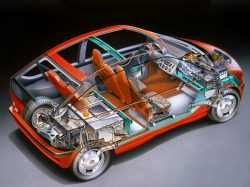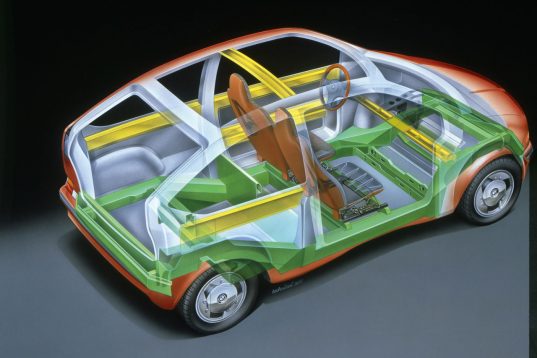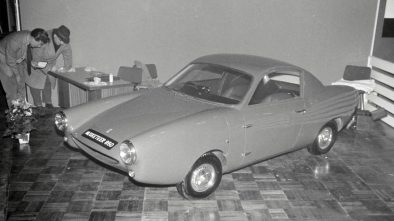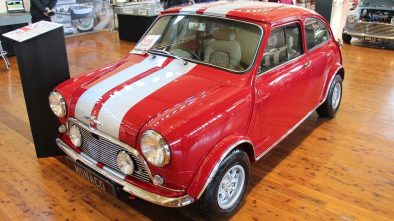BMW E1 (Z11)
BMW E1 (Z11) is a prototype of an electric vehicle from BMW. Once BMW’s sales and its performance image had begun to take off in the 1960s, there was little incentive to return to small cars in order to tempt additional customers. But with growing environmental awareness and the prospect of a mandatory quota of zero-emission cars in California in the 1990s, BMW began working on concepts for battery-powered city cars. Much earlier, the company had developed an electric version of the 1602 for the 1972 Summer Olympics in Munich.
The tiny E1 city car, presented in 1991, used an aluminumand-composite structure, seated four—plus luggage—and claimed a perhaps optimistic 120km/h top speed and 200 km range from its sodium-sulphur battery mounted under the rear seat. The E1, so called to stress its pure electric driveline, was fully roadworthy and is cited by BMW as an important steppingstone in the engineering progression that led to the i3 megacity car in 2013.
The BMW E1 (factory code Z11 ) was a 2+2-seater, which was only 3.46 m long, but its 1.65 m width was almost as wide as a BMW 3-sereis. The main feature of this model is its fully electric powrtrain. The engine, which was mounted directly above the rear axle, delivered 32 kW and transfered power to the rear wheels, as usual in BMW. The acceleration from 0 to 50 kph – 6 seconds, 0-80 kph – 18 seconds. The wheelbase was 232 centimeters, the turning circle – less than 9 meters. The 200 kilogram heavy-duty sodium-sulfur battery with 120 volts and 20 kWh provided energy for approx. 200 km range, before the BMW E1 had to plug again for 6-8 hours. The vehicle had a recuperation brakes with the help of which the traction battery could be recharged by braking energy. Outstanding for the time were the drum brakes integrated in the rims. This first prototype fell victim to a fire.

